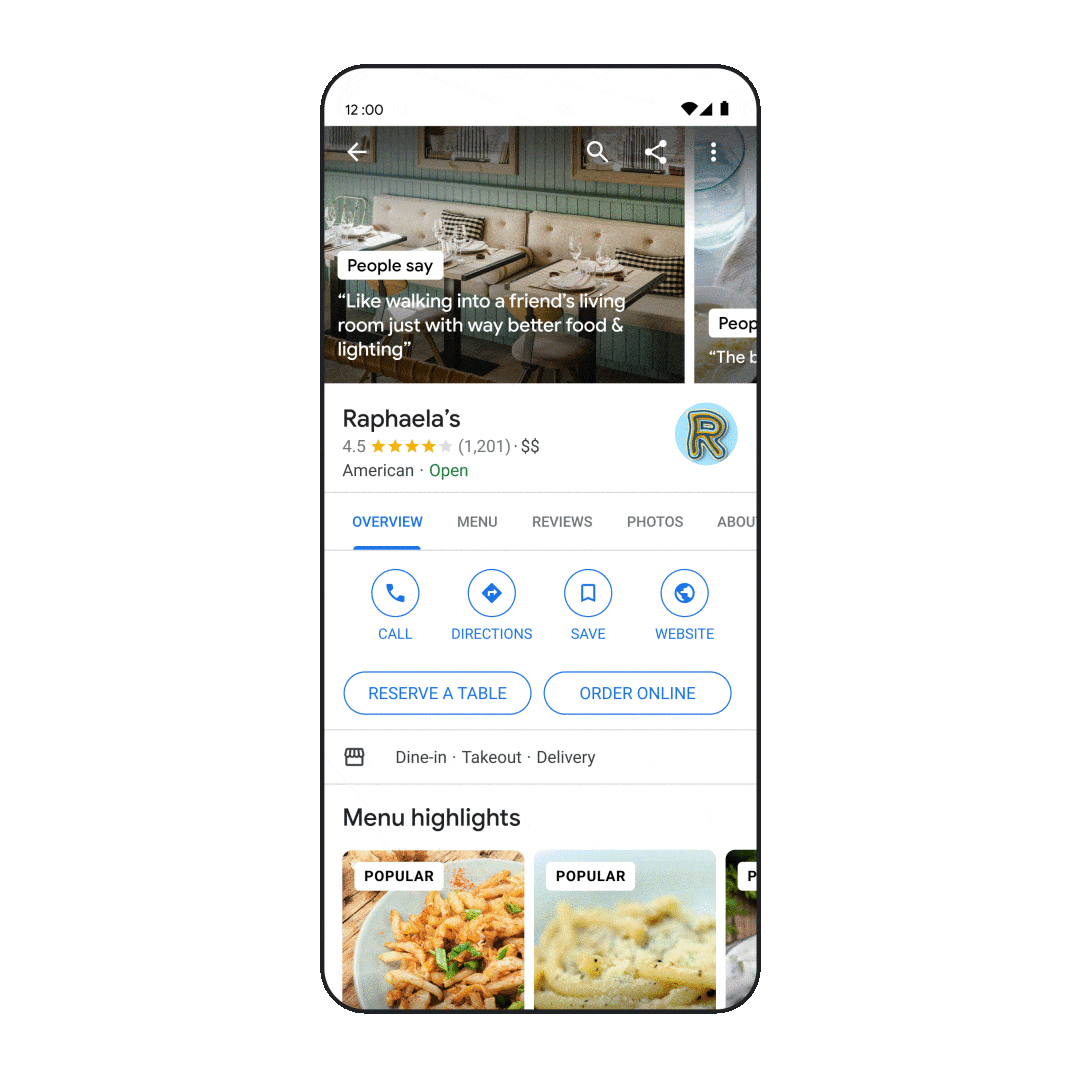How Google is working to help you find food and local businesses<p>At its Search On event today, Google unveiled several new ways to help people more easily find what they're looking for. Some things can be trickier to locate than most, like a particular style of clothing or a certain fragrance. But when it comes to food that makes your mouth and eyes water, Google thinks it can help. Engadget spoke with vice president and general manager of Local Search Yul Kwon to learn how the company believes it can bring people to the dishes they're craving.</p><p>Kwon's lived many lives. You might remember him as the
winner of Survivor: Cook Islands, but he's also been a management consultant, a law practitioner and the owner of several Red Mango franchise locations in California. "I lost about 20 pounds during the show and when I came back, I was so hungry," he said. "I basically just sat there and ate everything and anything I could get my hands on."</p><span id="end-legacy-contents"></span><p>His ravenous spiral led to a "40-pound weight swing," which drove Kwon to find healthier alternatives to junk food and dessert. On a trip to Los Angeles, Kwon discovered frozen yogurt and was hooked. But the dearth of high quality frozen yogurt stores in the Bay Area at the time meant it was hard for him to find the tasty treat at home. Inspired, and driven by the desire to make an "unlimited supply of frozen yogurt for me to eat myself," Kwon opened stores in downtown Palo Alto, San Carlos and San Jose. </p><p>Over time, competition in the froyo business grew intense, as more and more stores opened to cater to growing demand. "At some point everyone and their grandma was opening a frozen yogurt store," Kwon said. "A lot of the stores that opened were lower quality and lower cost and so they were not as healthy."</p><figure>

<figcaption></figcaption><div class="photo-credit">Max Morse / reuters</div></figure><p>Kwon said that amid this spike, it not only became became tough to differentiate his business from the competition, but the tools to reach and engage with customers just weren't available. "It was harder to track new customers to get the word out, and we didn't really have great tools to drive word of mouth or use technology to drive awareness."</p><p>Eventually, the financial crisis of 2008 became the final straw and Kwon had to close his businesses. </p><p>This is a story that's all too familiar. Small, local businesses lacking the tools to reach larger audiences eventually have to cave to competition and shutter. Though services like GrubHub and DoorDash have made it easier for people to discover restaurants to order food from, they often charge high fees and offer businesses little control over how they're presented. </p><p>These days, companies turn to social media to reach would-be customers, and making an attractive profile can determine how successful you are. Skills that have little to do with running a restaurant, like photography and caption-writing, are now key to bringing in money. Though it's not technically social media, Google Maps and Search results also play crucial parts in whether a business thrives or fails. If a restaurant's Maps listing has a rating that's lower than four stars, or if it doesn't have a menu available for perusal, a potential diner can quickly be turned off. </p><figure>

<figcaption></figcaption><div class="photo-credit">Google</div></figure><h2>Updated digital menus and vibe checks</h2><p>One of these potential roadblocks is fairly easy to solve. Not only does Google already provide a digital menu on most listings, it also groups user-submitted pictures of physical menus for easier reference. The company also announced today that it's expanding its coverage of digital menus, "making them more visually rich and reliable. </p><p>"We combine menu information provided by people and merchants, and found on restaurant websites that use open standards for data sharing," Sophia Lin, the company's general manager of Food and Search, wrote in a blog post. Google also uses image and language understanding technologies like its Multitask Unified Model to scrape available data and produce these menus, which will also showcase most popular dishes and call out different dietary options (starting with just vegetarian and vegan).</p><p>Just like Neighborhood Vibe that Google just announced for Maps, a new feature is also coming to Search to help capture and relay to users what makes a restaurant stand out. "Star ratings are helpful, but they don't tell you everything about a restaurant," Lin wrote. In the coming months, listings will show pictures and reviews that the company's machine learning systems determined are representative of how a place feels. </p><div id="9585aa7f21fd407bbe5d5ed2862a1d3a"><blockquote class="twitter-tweet"><p lang="en" dir="ltr">We’ve all been there… a food craving you can’t get off your mind. In the coming months you can search for a specific dish, like "soup dumplings near me," and quickly see what local restaurants offer it, with pictures and reviews — satisfying that craving in no time.
#SearchOnpic.twitter.com/E1oDdk3S0z</p>— Google (@Google)
September 28, 2022</div><h2>Identify and find specific dishes</h2><p>Google also wants to help people find the exact food items they're craving. "Our research shows 40 percent of people already have a dish in mind when they search for food," Lin wrote. "So to help people find what they're looking for, in the coming months you'll be able to search for any dish and see the local places that offer it."</p><p>Lin gave the example of soup dumplings, which she said is a family favorite. The new multisearch near me tool can not only identify the type of xiao long bao (the Chinese name for soup dumplings, or XLB for the well-informed) in a picture, but can also tell you where you can buy it near you. You can also get more specific with your search. </p><p>According to Lin, "In the past, searching for soup dumplings near me would show a list of related restaurants. With our revamped experience, we’ll now show you the exact dish results you’ve been looking for. You can even narrow your search down to spicy dishes if you want a bit of a kick"</p><p>Of course, these new tools alone won't help struggling small businesses thrive, but they do help users better understand what restaurants have to offer. </p><p>When Kwon recounts his experiences running his Red Mango franchises, he feels on hindsight that "it was hard for people to really understand how we differed from other yogurt shops, It wasn't any like one place that could go to to really help them find what they're looking for."</p><p>Kwon said he learned from that ordeal how hard it was to be successful as a small business and wanted to do something to help people in similar situations. He believes that building a set of tools that help small businesses succeed is how he can make a difference.</p><p>"Ultimately, technology can be the great equalizer." he said. "It can be the thing that helps small businesses can change on an even playing field within the big guys." While today's announcements on their own don't seem to specifically target local businesses trying to reach customers in their community, Kwon says the updates "help people connect and find the types of foods that they're looking for," which he said is part of helping build relationships between people and their communities.</p><p>I want to see Google do more to help and empower small local businesses trying to engage with their communities and customers, and though I'm underwhelmed by today's announcements on that front, I am hopeful for more to come. </p>
Source:
How Google is working to help you find food and local businesses